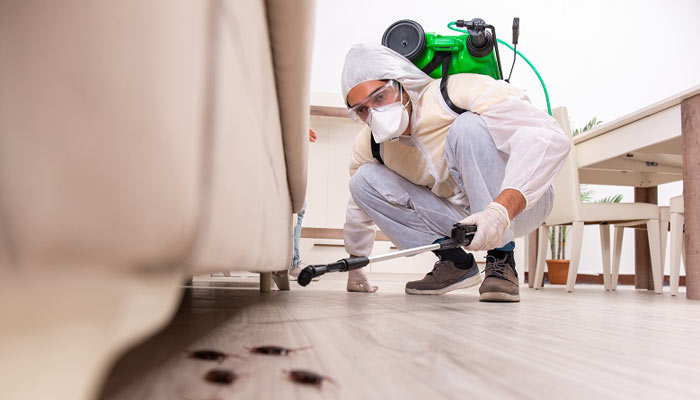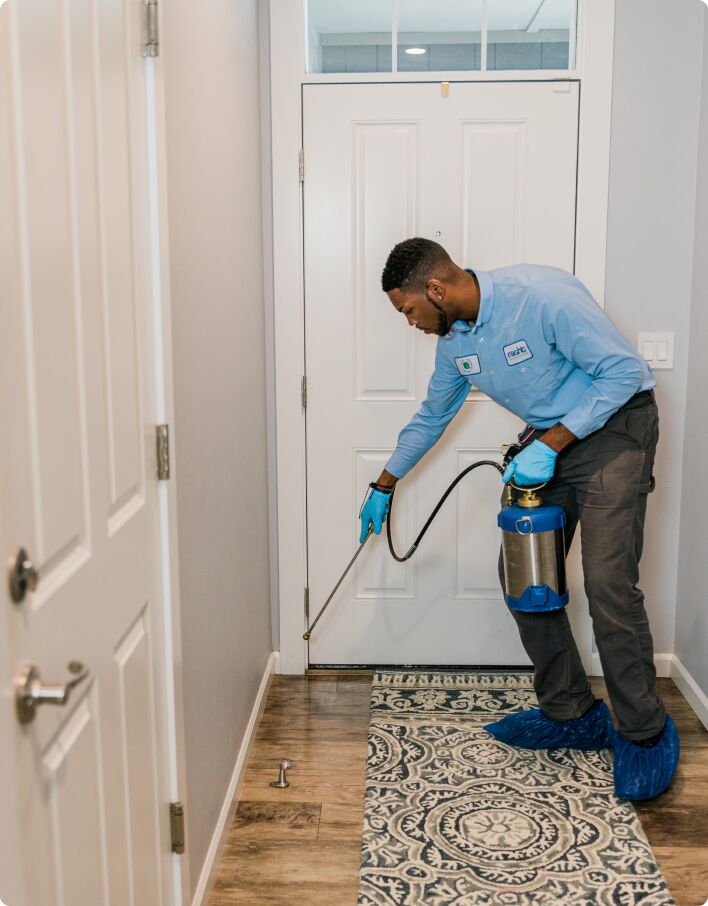Discover the Secrets of Insect Control: Just How It Functions and Refine Revealed
Insect control is a meticulous technique that involves a deep understanding of pest behavior, calculated planning, and specific execution. From determining the root triggers of invasions to implementing customized control actions, the procedure of parasite control is a mix of scientific research and method aimed at preserving an unified setting.
Pest Habits Comprehending
Recognizing the detailed behaviors of pests is vital for reliable parasite control management. The behavior of roaches, such as their choice for moist and dark settings, guides pest control specialists in identifying where to concentrate therapy initiatives.
Furthermore, understanding how insects interact with their setting and react to exterior stimuli can enhance the efficiency of control approaches. As an example, some pests show indications of resistance to certain pesticides, demanding using alternate chemicals or techniques. By staying abreast of the most current research on pest behavior, insect control professionals can constantly refine their strategies and stay ahead of progressing bug populaces. Inevitably, a deep understanding of bug behavior is a cornerstone of effective pest control monitoring.

Assessment and Identification Techniques
Effective parasite control administration relies greatly on meticulous evaluation and exact recognition approaches to accurately establish and analyze infestations targeted elimination strategies. Evaluation includes a comprehensive exam of the residential or commercial property to establish the degree of the parasite trouble, identify the kind of bug present, and find prospective entrance points. This procedure might consist of visually checking usual hiding spots, using surveillance devices such as cameras or catches, and analyzing pest droppings or damage signs.
Recognition is a critical action that adheres to assessment, as various insects call for details treatment methods. Parasite control experts utilize their knowledge and expertise of pest habits to recognize the types present accurately. This may include examining physical attributes, such as size, color, and markings, in addition to examining the bug's environments and behaviors. In some instances, examples may be gathered for additional analysis in a research laboratory to verify the pest varieties.
Pest Control Measures Implementation
Having actually carefully checked and precisely determined the insects present, the next crucial step is the execution of targeted bug control steps to successfully remove the invasion. Chemical treatments include the usage of chemicals to get rid of pests, while biological controls introduce all-natural killers to handle parasite populaces.
Correct implementation of parasite control steps requires experience to ensure the safety and security of citizens and the setting. By utilizing targeted bug control actions, problems can be efficiently removed, creating a healthier and pest-free atmosphere.
Environmental Impact Factors To Consider
Mindful evaluation of the prospective ecological impact is a crucial element when executing insect control procedures. Bug control techniques can have various results on the setting, consisting of non-target species being impacted, contamination of soil and water resources, and interruption of the ecosystem. It is necessary to consider these variables to decrease any adverse repercussions on the environment.
To alleviate ecological influences, integrated bug administration (IPM) techniques are typically suggested. IPM concentrates on making use of a mix of methods such as biological control, environment adjustment, and the targeted use chemicals as a last hope. Pest Control Homestead. By using an alternative strategy, IPM aims to regulate pests successfully while reducing harm to the setting

Continuous Tracking and Avoidance
Continuous tracking and avoidance play essential functions in keeping efficient insect control techniques gradually. When preliminary insect control procedures have been implemented, ongoing tracking ends up being important to track insect activity levels and ensure that the picked techniques are functioning efficiently. Regular inspections by trained specialists permit the early detection of any kind of signs of bug rebirth, enabling quick action to be taken before the invasion rises.
Safety nets are just as essential in maintaining a pest-free atmosphere. Click Here Applying methods such as securing entrance factors, maintaining sanitation, proper waste management, and minimizing resources of food and water deprive bugs of the essentials they need to grow. By proactively attending to these variables, the likelihood of an insect problem is significantly minimized.
In addition, safety nets add to the long-lasting success of parasite control initiatives, minimizing the need for reactive treatments and connected costs. By integrating recurring monitoring and prevention into a comprehensive parasite monitoring strategy, people and organizations can successfully protect their buildings versus unwanted intruders.
Conclusion
Finally, insect control includes understanding insect behavior, carrying out extensive assessments, applying control procedures, taking into consideration ecological influences, and keeping ongoing tracking and avoidance. By complying with these steps, parasite problems can be effectively taken care of and controlled. It is important to take an aggressive technique to pest control to secure both human wellness and the atmosphere.
By imp source staying abreast of the newest research study on parasite behavior, pest control professionals can consistently fine-tune their approaches and remain ahead of advancing bug populaces.Having actually carefully checked and precisely recognized the bugs existing, the next essential action is the implementation of targeted insect control measures to successfully eliminate the invasion.Moreover, selecting environmentally pleasant insect control products and methods can substantially minimize the environmental footprint of bug monitoring practices - Pest Control Homestead. As soon as preliminary parasite control steps have been executed, ongoing monitoring ends up being essential to track parasite activity levels and make sure that the chosen techniques are working successfully.In conclusion, bug control involves understanding bug behavior, carrying out complete assessments, executing control procedures, taking into consideration ecological impacts, and preserving continuous surveillance and avoidance